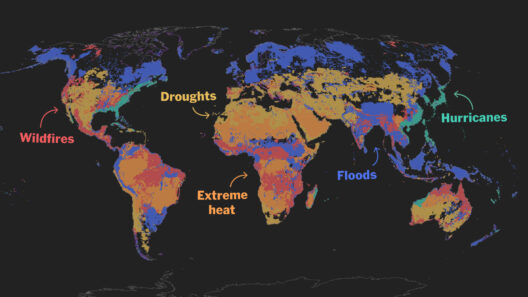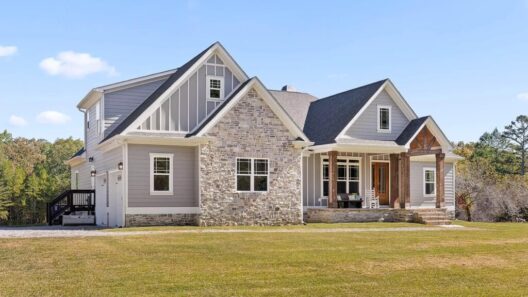As global temperatures climb and the threat of climate change looms ever larger on the horizon, one must ponder: Is global warming shaking up the real estate market? This question not only intrigues investors and homeowners but also poses a unique challenge to urban planners, developers, and communities alike. Real estate, an industry deeply intertwined with geography, is susceptible to the capricious whims of our changing climate. With this backdrop, let us delve into the multifaceted implications of climate change on real estate investments.
The impacts of climate change are manifold, ranging from rising sea levels to increased frequency of extreme weather events. Coastal areas, in particular, face the double jeopardy of flooding from storm surges and the slow encroachment of the ocean itself. As scientists project significant rises in sea levels—estimated to be as much as 2 feet by 2050—properties that once sat pretty beside the shores are now vulnerable to inundation and deterioration. Consequently, potential homebuyers in these regions are increasingly apprehensive about the long-term viability of their investments. This trepidation manifests in fluctuating property values, shifting demand, and even changes in insurance premiums, as insurers reassess risks associated with inundated areas.
On the other hand, heat waves, droughts, and wildfires in various regions have catalyzed transformative shifts in real estate preferences. Locations previously deemed subpar due to ecological nuances are becoming hot commodities. For instance, properties in mountainous or higher-altitude areas might experience an uptick in demand as buyers seek refuge from the sweltering heat in urban centers. This phenomenon evokes the question: Are buyers prioritizing climate resilience when seeking new homes? The answer appears to be increasingly affirmative, as the ethos of sustainable living takes root in consumer consciousness.
As the real estate market adapts to these evolving circumstances, developers bear a colossal responsibility. A paradigm shift is underway, requiring builders to think beyond square footage and aesthetic appeal. Climate-conscious design has entered the lexicon of construction, demanding innovation and research into sustainable materials, energy-efficient systems, and resilient infrastructures. Incorporating green roofs, solar panels, and permeable pavements is no longer just a trend—it has become an imperative. But herein lies the challenge: how can builders balance profitability with environmental stewardship? Striking this equilibrium necessitates a new business model, one that accounts for long-term sustainability rather than short-term gains.
Moreover, a naïve complacency regarding zoning laws could complicate matters further. Many municipalities have not yet updated their regulations to reflect the exigencies brought about by climate change. Outdated zoning laws can hinder the construction of necessary infrastructure, including levees and drainage systems, and can slow the transition to more sustainable development practices. Consequently, homeowners and local government entities must collaborate to advocate for regulatory reforms that permit and support climate-resilient designs, ensuring that real estate investments don’t become liabilities in the face of natural calamities.
Insurance plays a pivotal role in the contemporary real estate landscape as climate change reshapes risk assessments. Home insurance premiums in flood-prone zones have skyrocketed, raising the question of affordability for potential homeowners. Moreover, homes that once enjoyed unobstructed views of scenic landscapes may find themselves encircled by wildfire smoke or vulnerable to erosion. The insurance industry is compelled to recalibrate its risk models in light of these emerging threats, prompting conversations about feasibility and access to coverage. Those who fail to adapt may find themselves facing insurmountable financial burdens.
Furthermore, investors are now scrutinizing Environmental, Social, and Governance (ESG) principles more closely than ever before. Investment decisions are increasingly influenced by a property’s environmental footprint and social implications. The notion of ‘greenwashing’—embellishing a property’s eco-friendly attributes without substantiation—has become a critical consideration, as savvy buyers and investors employ due diligence to ensure that claims made about sustainability are genuine and transparent. This scrutiny paves the way for a more responsible real estate market, where ethical considerations align with financial objectives.
However, not all impacts of climate change on real estate are adverse. Investment in renewable energy technologies and retrofitting older buildings enhances both property values and community resilience. Neighborhoods that prioritize green spaces, climate-conscious architecture, and pedestrian-friendly design will attract a demographic that values sustainability, potentially stabilizing or even elevating home values. The advent of eco-villages and mixed-use developments further reflects the potential for innovation in the realm of real estate, cultivating communities that offer both economic and environmental benefits.
As we contemplate the intricate web of factors influencing the real estate market in an era defined by climate uncertainty, a crucial realization emerges. The nexus of climate change and the real estate market underscores the importance of proactive adaptation. Whether through innovative design, regulatory reforms, or community engagement, stakeholders must unite to craft solutions that not only withstand the tempest of climate change but also elevate the quality of life for all residents. The question remains: Will the real estate market rise to this occasion, or will it falter under the strains of a warming planet? The answers lie not solely in market trends but in the collective action of all involved parties.






